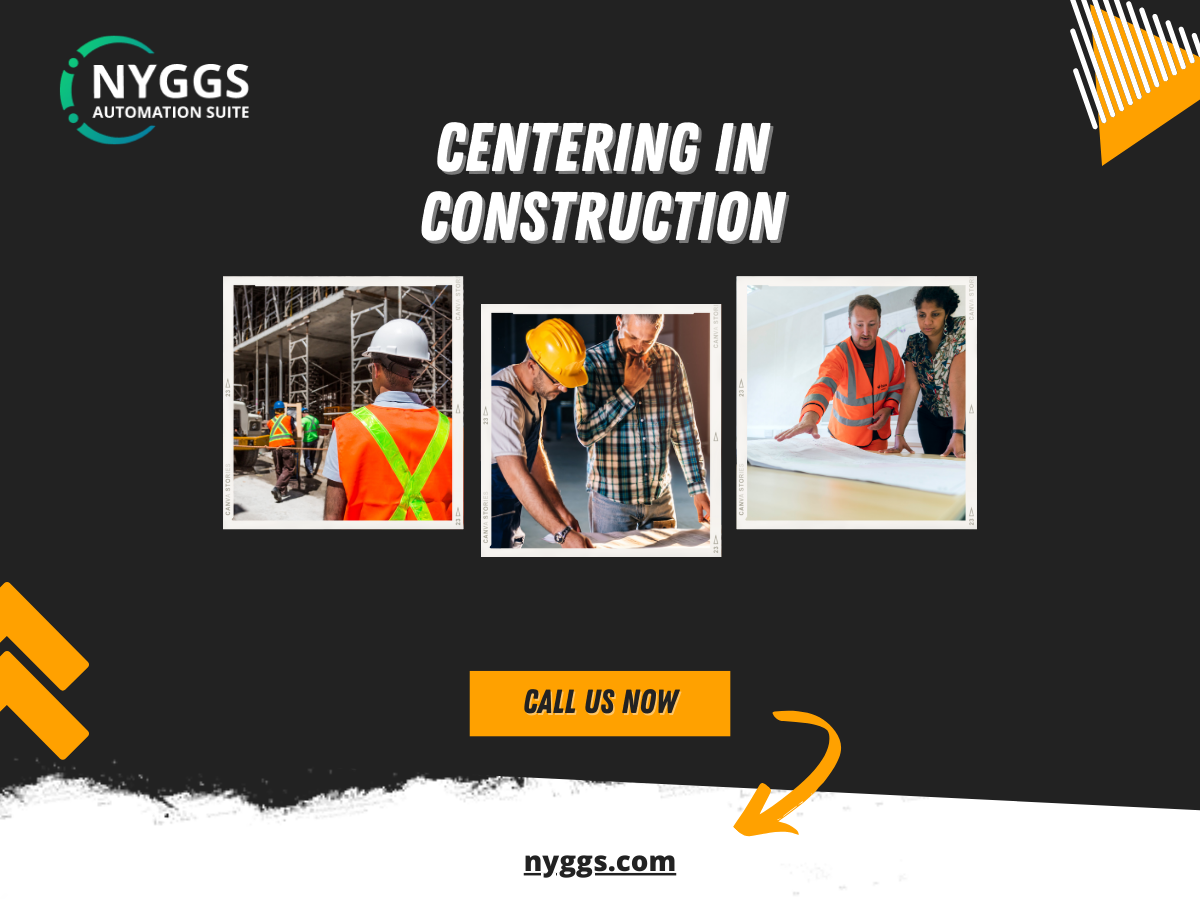Understanding Centering in Construction


Introduction to Centering in Construction
Are you familiar with the concept of Centering in Construction? If not, don’t worry! In this article, we will provide you with a comprehensive overview of what centering is and why it is an essential component of any construction project.
What is Centering?
Centering, also known as formwork, refers to the temporary structure used to support the weight of the concrete until it cures and becomes self-supporting. Essentially, the form acts as a mold that shapes the concrete into the desired shape and holds it in place until it cures.
Importance of Centering in Construction
entering plays a critical role in ensuring the safety, stability and accuracy of a construction project. By providing temporary support during the early stages of construction, centering helps maintain structural integrity while reducing the risk of misalignment or failure.
Types of Centering Used in Construction
Depending on the project, different types of centering can be used. Each type has its advantages and is selected based on the size, complexity and budget of the construction project.
Wooden Centering
Wooden centering is one of the most traditional forms used, especially for small projects. It is relatively inexpensive and easy to work with. However, it is not as durable or long lasting as other materials.
Steel Centering
Steel centering is commonly used for large construction projects due to its durability and strength. Steel forms can withstand heavy loads, making them suitable for large spans and complex structures.
Bamboo Centering
Bamboo centering is used in some regions, particularly in countries where bamboo is readily available. Although not as strong as steel, bamboo offers a sustainable and cost-effective alternative, especially for smaller projects.
Adjustable Centering
Adjustable centering allows for flexibility in height and size, making it suitable for construction projects that require varying shapes and sizes. These systems often use steel frames with adjustable supports.
Materials Used in Centering
Material selection is important in the design and construction of centering frameworks. Below are the most commonly used materials for centering.
Timber
Wood is often used for centering on small to medium projects. It’s affordable, easy to work with, and relatively light. However, it is not as durable as other materials.
Plywood
Plywood is often used in conjunction with wood to provide a smooth surface for concrete structures. It is inexpensive, easy to form, and can be reused if properly maintained.
Steel
Steel is preferred for its strength and ability to support large structures. It is often used in high-rise buildings, bridges, and other large infrastructure projects.
Aluminum
Aluminum is a lightweight alternative to steel and is often used in projects that require mobility or quick assembly. It’s more expensive than wood, but offers greater durability and reusability.
Steps Involved in Centering
Centering involves several critical steps that ensure the structure is built to specifications.
Designing the Formwork
The formwork design phase is critical because it determines the dimensions and materials needed to create the centering structure. Engineers carefully calculate loads and pressures to ensure stability.
Assembling the Centering Structure
Once the design is complete, the centering structure is assembled. This step involves setting up the frame based on the design and making sure all the pieces are secure.
Placing Reinforcements
Reinforcements, such as steel bars, are placed within the centering to support the concrete as it sets. This adds additional strength to the structure.
Pouring the Concrete
Once the centering and reinforcements are in place, concrete is poured. The centering holds the wet concrete in place until it hardens.
Benefits of Using Centering in Construction
Centering is invaluable in construction, offering several benefits:
Structural Support
Without centering, it would be difficult to hold wet concrete in place, especially for complex structures such as arches or domes.
Precision and Accuracy
Centering ensures that the final structure adheres to its design, maintaining accurate dimensions, angles, and shapes.
Safety
Properly designed centering reduces the risk of structural failure during construction, ensuring worker safety.
Challenges in Centering Construction
Despite its importance, centering comes with its own set of challenges.
Cost Concerns
Depending on the project, centering can be expensive, especially when using durable materials such as steel or aluminum.
Material Availability
In some regions, certain materials may be difficult to obtain, which can cause delays in the construction process.
Skill Requirement
Proper centering installation requires skilled labor to ensure that the structure is secure and meets design specifications.
Innovations in Centering Techniques
The construction industry is constantly evolving, and new centering techniques are making the process faster and more efficient.
Prefabricated Centering Systems
Prefabricated systems save time and reduce errors during installation, as they are designed and manufactured off-site.
Modern Materials
New materials like advanced polymers and composites are being used for centering, providing greater strength and flexibility.
Applications of Centering in Different Types of Construction Projects
Centering is used in various types of construction projects, from small residential buildings to massive infrastructure projects.
Residential Buildings
For homes and small buildings, wood or bamboo centering is often used because these materials are inexpensive and easier to handle.
Commercial Buildings
Large projects, such as office buildings and shopping centers, typically require steel or adjustable centering for greater accuracy and support.
Bridges and Flyovers
Bridge and overpass construction requires heavy-duty centering due to the weight and size of the structures.
Dams
Dams and other large infrastructure projects require highly specialized centering, often using steel or prefabricated systems.
How to Maintain Centering Materials for Reuse
Proper maintenance of centering materials is crucial for long-term cost savings and efficiency.
Cleaning and Storing Timber Centering
Timber centering should be cleaned and stored in a dry environment to prevent warping and degradation.
Handling Steel Centering
Steel centering must be cleaned and stored properly to prevent rust and corrosion, ensuring its reusability.
Common Mistakes to Avoid in Centering
To ensure successful construction, it’s essential to avoid common mistakes.
Incorrect Measurements
Incorrect dimensions in centering can lead to structural issues or misaligned concrete pours.
Weak Materials
Using low-quality or damaged materials can compromise the safety and effectiveness of centering.
Conclusion
Centering in Construction is a critical aspect that ensures the safety, precision and stability of structures during the building process. By choosing the right materials and techniques, builders can achieve accurate and durable results. While centering requires careful planning and execution, it is an essential tool in modern construction. This practice of centering in construction plays a vital role in creating sound and reliable structures in various construction projects.
FAQs
What is the difference between centering and shuttering?
Centering supports structures like arches and domes, while shuttering is used to hold vertical concrete walls in place.
How long does centering take to complete?
The time required depends on the size and complexity of the project. It can range from a few days to several weeks.
Can centering be reused?
Yes, with proper maintenance, materials like timber, steel, and aluminum can be reused in multiple projects.
What are the best materials for centering?
Steel and aluminum are considered the most durable and reliable materials for centering, though timber is still widely used in smaller projects.
Why is centering important in construction?
Centering provides temporary support to concrete structures, ensuring they retain their shape and strength during the curing process.



